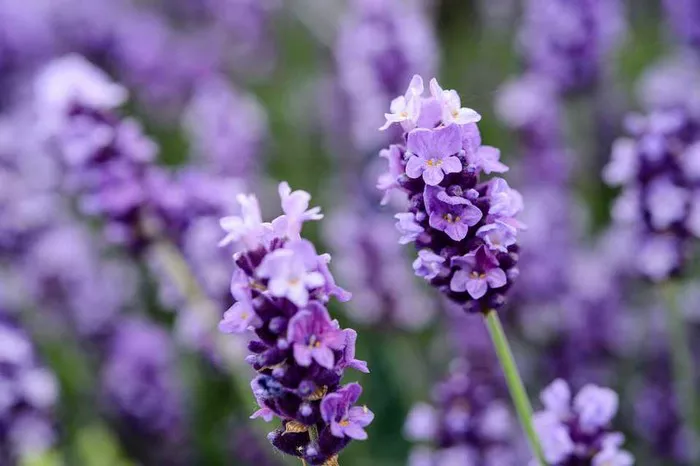Lavender, with its delicate purple hues and soothing fragrance, is a beloved herb known for its myriad of uses. From aromatherapy to culinary delights, lavender holds a special place in many hearts and homes. Its popularity stems not only from its aesthetic appeal but also from its calming properties and versatility.
Lavender, botanically known as Lavandula, is a genus of flowering plants in the mint family, Lamiaceae. It is native to the Mediterranean region but is cultivated in various parts of the world today. Lavender flowers typically bloom in spikes, adorned with tiny, fragrant florets ranging in color from pale lilac to deep purple.
Beyond its ornamental value, lavender is prized for its essential oils, which are extracted through steam distillation and used in perfumery, cosmetics, and holistic wellness practices. Additionally, lavender flowers are utilized in culinary applications, adding a floral and slightly sweet flavor to dishes, desserts, and beverages.
One popular method of preserving lavender’s beauty is by pressing its delicate blooms. Pressed lavender flowers can be used for crafting, decoration, or even as botanical specimens. In this article, we will explore various methods of pressing lavender flowers and provide a step-by-step guide along with useful tips to ensure successful results.
Methods of Pressing Lavender Flowers
There are several methods for pressing lavender flowers, each with its own advantages and considerations. Here are some commonly used techniques:
1. Traditional Pressing: Traditional pressing involves placing lavender flowers between absorbent materials, such as blotting paper or parchment paper, and applying pressure to flatten and dehydrate the blooms. This method is straightforward and yields excellent results, though it requires patience as the flowers may take several weeks to fully dry.
2. Microwave Pressing: Microwave pressing is a quick and efficient method that utilizes the heat generated by a microwave to accelerate the drying process. Lavender flowers are placed between layers of paper or cardboard and microwaved in short intervals until dried. While this method can produce results in a matter of minutes, caution must be exercised to prevent overheating and scorching the flowers.
3. Book Pressing: Book pressing is a simple and accessible technique that involves placing lavender flowers between the pages of a heavy book and allowing the natural weight to flatten and dry the blooms over time. This method is ideal for preserving the delicate shape and color of the flowers, though it may take several weeks for complete drying to occur.
4. DIY Flower Press: A DIY flower press can be constructed using materials readily available at home, such as wooden boards, cardboard, and bolts. Lavender flowers are sandwiched between layers of absorbent paper and secured within the press, where even pressure is applied to facilitate drying. This method offers control over the pressing process and is suitable for pressing multiple flowers simultaneously.
A Step-by-Step Guide to Pressing Lavender Flowers
Follow these steps to successfully press lavender flowers:
1. Harvesting: Select fresh lavender blooms at their peak, preferably in the morning when the oils are most concentrated. Use sharp scissors to cut the flower stems just above the leaves, leaving a few inches of stem attached.
2. Preparation: Gently remove any excess foliage from the stems, taking care not to damage the flowers. Inspect the blooms for any signs of pests or disease and discard any damaged or discolored flowers.
3. Arrangement: Arrange the lavender flowers in a single layer between sheets of absorbent paper, such as blotting paper or parchment paper. Ensure that the flowers are spaced evenly and not overcrowded to allow for adequate airflow and drying.
4. Pressing: Place the prepared lavender flowers between the pages of a flower press, book, or makeshift press, ensuring that they are positioned flat and evenly distributed. Apply pressure to the press using weights, clamps, or straps, taking care not to crush the delicate blooms.
5. Drying: Store the pressed lavender flowers in a cool, dry place away from direct sunlight and humidity. Check the flowers periodically to monitor the drying progress and replace the absorbent paper if necessary. Depending on the method used, the flowers may take anywhere from a few days to several weeks to fully dry.
6. Finishing: Once the lavender flowers are completely dry, carefully remove them from the press and gently brush away any remaining debris or particles. The pressed flowers can be stored in airtight containers or used immediately for various crafts and decorative purposes.
Tips for Pressing Lavender Flowers
1. Timing is Key: Harvest lavender flowers when they are fully open but still in bud, as this is when they are most vibrant and fragrant.
2. Even Pressure: Apply even pressure when pressing the flowers to prevent distortion or uneven drying.
3. Proper Storage: Store pressed lavender flowers in a dry, dark place to preserve their color and fragrance for longer periods.
4. Experiment with Different Techniques: Explore different pressing methods to find the one that best suits your preferences and requirements.
5. Use Quality Materials: Use high-quality absorbent paper and sturdy pressing materials to ensure optimal results.
Conclusion
Pressing lavender flowers is a delightful way to preserve their beauty and fragrance for various decorative and creative endeavors. Whether you opt for traditional pressing methods or innovative techniques, the key lies in patience, attention to detail, and a touch of creativity. By following the steps outlined in this guide and incorporating the provided tips, you can successfully press lavender flowers to enjoy their timeless charm year-round.


